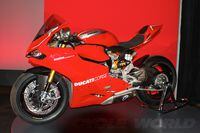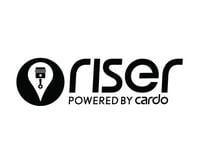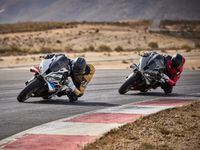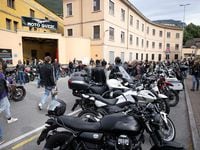Milan—As per tradition, Ducati kicked off the events at EICMA. It’s a pivotal year for Italy’s most successful motorcycle maker, and although the acquisition by Audi was on people’s minds, Ducati CEO Gabriele Del Torchio didn’t elaborate on the point.
Rather, Del Torchio cited the positive results Ducati has achieved during 2012, a year that saw motorcycle sales shrink dramatically in major European markets such as France and the UK, where Ducati was able to increase its sales significantly. The Bologna-based make was even more successful in Germany and the U.S., where new record sales figures were achieved. Of note, Ducati sales in Italy declined in parallel with the market, down by 33 percent, although volume increased by two percent in emerging markets such as Thailand, Malaysia, Australia and Brazil.
Closing his introductory speech, Del Torchio invited Audi’s Worlwide Marketing Manager, Luca De Meo, onto the stage. This was the most meaningful moment of the event. De Meo is a young but highly experienced manager who started his brilliant career at Fiat and then was hired by Audi. Rumors about De Meo becoming the incoming Ducati CEO, just waiting for Del Torchio’s retirement, have been swirling these past several months, and I see his presence on the stage as a prelude to it actually happening within the next year.
After this meaningful moment, General Manager Claudio Domenicali took the floor and introduced the new Ducati models for 2013. The only really new bike is the second-generation Hypermotard. It’s offered in two versions, Base and SP, and also as the touring-oriented Hyperstrada. They all share the brand-new 821cc edition of the 11-degree Testastretta, an engine conceived to upgrade the performance potential of the Hypermotard, but with no excesses.
It is a particularly well-executed engine, sharing all the evolutionary steps that make the 2013 edition of the Multistrada 1200 so pleasant, secondary air injection included. The 821cc displacement comes from an 88mm bore and a 67.5mm stroke. With a compression ratio of 12.8:1 and an induction system using 52mm throttle bodies, the 821 Testrastretta produces 110 hp at 9250 rpm and 65.8 foot-pounds of torque at 7750 rpm. Among its many virtues, this engine has a valve-adjustment interval of 30,000 kilometers, a huge improvement over the 12,000-kilometer interval for the sohc, air-cooled, two-valve 1100cc unit that powered the previous-generation Hypermotard.
The Hypermotard 821 is equipped with the most advanced electronics suite developed by Ducati: ride-by-wire with three selectable power maps, traction control, and Brembo brakes with Bosch ABS that has three selectable levels of intervention. A traditional Ducati-style trellis frame (with 34mm steel tubing) is integrated with a lightweight cast aluminum tailsection. The wheelbase spans 59.1 in., an increase of 1.8 in. over the previous bike, and the Hypermotard has more relaxed steering geometry, featuring 25.5 degrees of rake (vs. 24) and a similar amount of trail: 4.1 in. vs. 4.0 in. The seat height has gone up a lot: It’s 34.2 in. on the Hypermotard and 35.0 in. on the Hypermotard SP, although 1.8-in.-lower seats are available.
The main difference between the Hypermotard and the Hypermotard SP is suspension. The Hypermotard uses a 43mm Kayaba front fork featuring 6.7 in. of wheel travel, and a Sachs shock absorber that ensures 5.9 in. of rear travel. The Hypermotard SP, on the other hand, has the latest lightweight 50mm Marzocchi front fork, an all-aluminum unit whose 7.3 in. of travel is complemented nicely by 6.9 in. of rear travel. Cornering clearance is ample, offering lean angles up to 47.5 degrees, thanks to the standard Pirelli SuperDiablo Corsa tires. The Hypermotard SP tips the scales at just 377 lb., says Ducati.
The Hyperstrada is a Hypermotard with a slightly lower seat height, 33.5 in., and using the same Kayaba/Sachs suspension but adding this standard equipment: side bags, a windshield, passenger’s safety grab handle, a more comfortable seat and two 12-volt outlets for your electrically heated vest or other accessories.
Speaking of the new Hypermotard, it retains the sharp, aggressive style of the original, a big plus in our book because it seems as if Ducati has been struck by some kind of “touring bike” syndrome...even a Strada variant of the Diavel has been developed: A larger and much more comfortable seat, with backrest for the passenger, is the major modification, along with the windshield, side bags and a more ergonomic handlebar with heated grips. It’s not exactly a real new model; rather, it’s an interesting interpretation of a rather extreme machine, smartly addressed to a new generation of potential customers. More so than the Hyperstrada, in my humble opinion, and the price differential will make a huge difference.
And finally, the 1199 Panigale R, the ultimate Ducati Superbike. It’s powered by a special version of the already potent 90-degree V-Twin, with lightweight titanium rods and a lighter flywheel helping to move the redline up to 12,000 rpm. This takes full advantage of the 60.8mm stroke (mean piston speed is at a reasonable 79.79 ft./sec.) to squeeze extra performance from an engine that is still rated at 195 hp at 10,750 rpm. On the R, though, we suspect those are real horses.
The bike is loaded with the ultimate racing components, starting with a Termignoni high-performance exhaust, a “Carbon Like Diamond” treatment on the fingers of the desmodromic valves and the rocker-arm cam followers, an Öhlins racing fork (with twin-tube technology for maximum adjustability), and carbon-fiber body components that help keep the claimed dry weight down to a staggering 364 lb. There’s also a smart trick at the swingarm pivot: An eccentric allows a wide enough range of pivot-height adjustment (in relation to its alignment with the front and the rear sprockets) that different traction response can be tuned to suit the track. This was a limiting factor of the pivot going through the crankcase and now has been brilliantly solved.
The Ducati 1199 Panigale R comes with a long list of special components that make it a real racing machine. Pricing has not been confirmed. A final note: I did not see the “Panigalina,” the little 898cc brother of the ultimate Twin, at EICMA. I know this replacement for the 848 sportbike is in the works. Might come in the spring.
































/cloudfront-us-east-1.images.arcpublishing.com/octane/YMWAIPIPSJAOXOU3QMJMGH37OM.jpg)


/cloudfront-us-east-1.images.arcpublishing.com/octane/EJ6KZRGAYBCVXNL2PJXL37UVWQ.jpg)
/cloudfront-us-east-1.images.arcpublishing.com/octane/AAN4TI76M5H5JMUVEIGASWXBDU.jpg)
/cloudfront-us-east-1.images.arcpublishing.com/octane/P3RXD2UCPFF37CMB7CHPVKXORY.jpg)
/cloudfront-us-east-1.images.arcpublishing.com/octane/VZEG2EJI2RDFZNHLRZMU56MD3Q.jpg)
/cloudfront-us-east-1.images.arcpublishing.com/octane/GVJQO5FFOFBWNGODOBRB4FBAW4.jpg)
/cloudfront-us-east-1.images.arcpublishing.com/octane/BIVAK2SFIBDJJM25E7I5VU2FJE.jpg)
/cloudfront-us-east-1.images.arcpublishing.com/octane/CH5VX52UG5CFHOVH5A6UYEFWWA.jpg)
/cloudfront-us-east-1.images.arcpublishing.com/octane/ZVGJNGZRU5C33N7KN23BBFKSC4.jpg)


/cloudfront-us-east-1.images.arcpublishing.com/octane/CZ5OM3E43ZEXJHY7LCYXCHLIKI.jpg)
/cloudfront-us-east-1.images.arcpublishing.com/octane/DF5T4K5KPZFJXFCTGPYR77PKJM.jpg)
/cloudfront-us-east-1.images.arcpublishing.com/octane/RMCT2KVQBJHBZMRTSLOVPMOILU.jpg)

/cloudfront-us-east-1.images.arcpublishing.com/octane/K45KB2XHQVA65DX7VN4ZSMT2BI.jpg)
/cloudfront-us-east-1.images.arcpublishing.com/octane/FNHXQQ56BRD7TO4YIJ453PNG2M.jpg)
/cloudfront-us-east-1.images.arcpublishing.com/octane/OIKJC4JA3ZH7BMKUGWYKBIY5FA.jpg)
/cloudfront-us-east-1.images.arcpublishing.com/octane/MT2SAEWY6FDXFBYSLDE3AEFDTM.jpg)
/cloudfront-us-east-1.images.arcpublishing.com/octane/66UPKPYVURBPRCP5HXSN56MEMM.jpg)
/cloudfront-us-east-1.images.arcpublishing.com/octane/EOREGDSRKFDCRJC6K3EDVHBGCE.jpg)
/cloudfront-us-east-1.images.arcpublishing.com/octane/42RF63Q3LVCMBP3DGTWXFYSMOA.jpg)